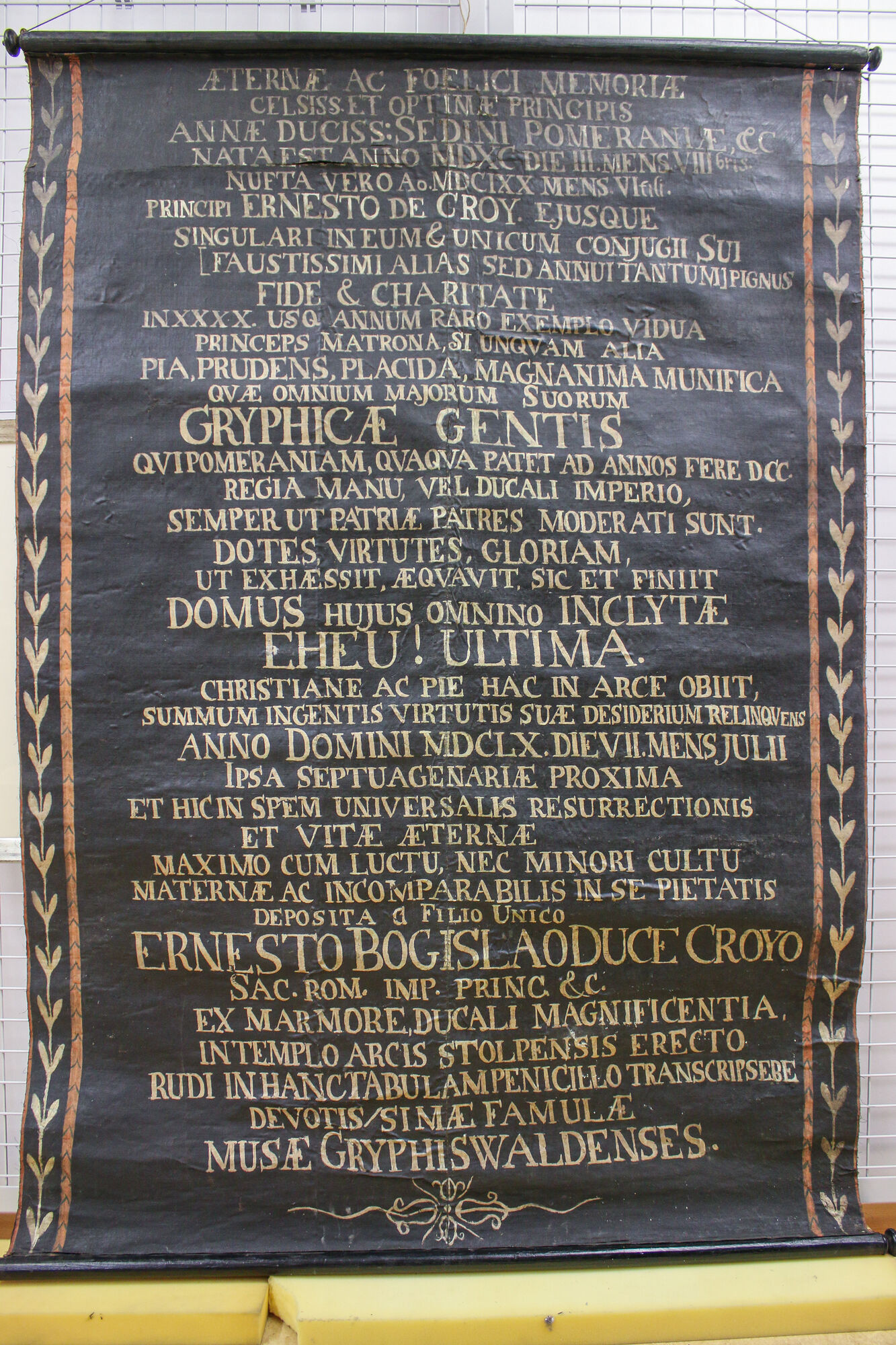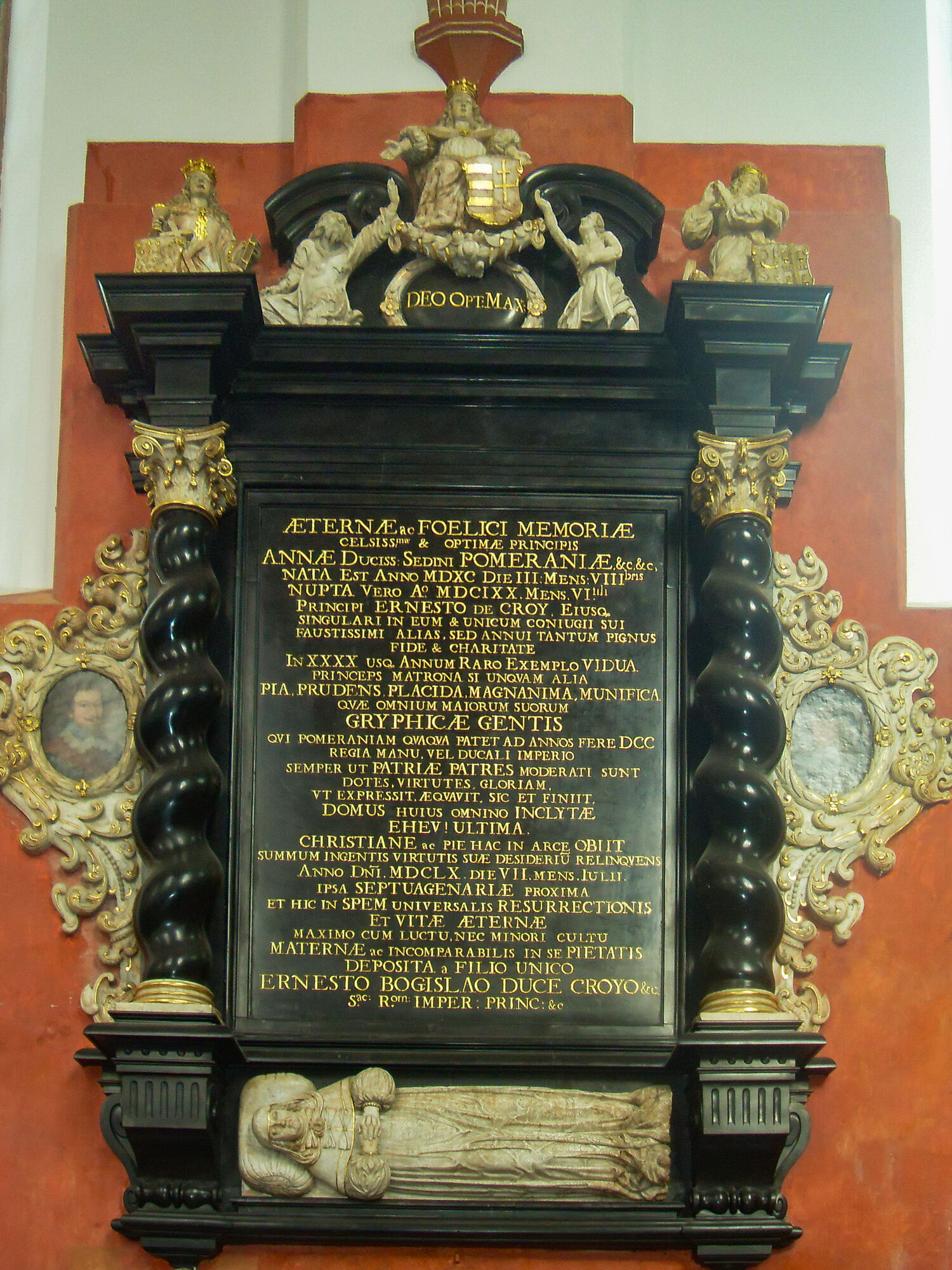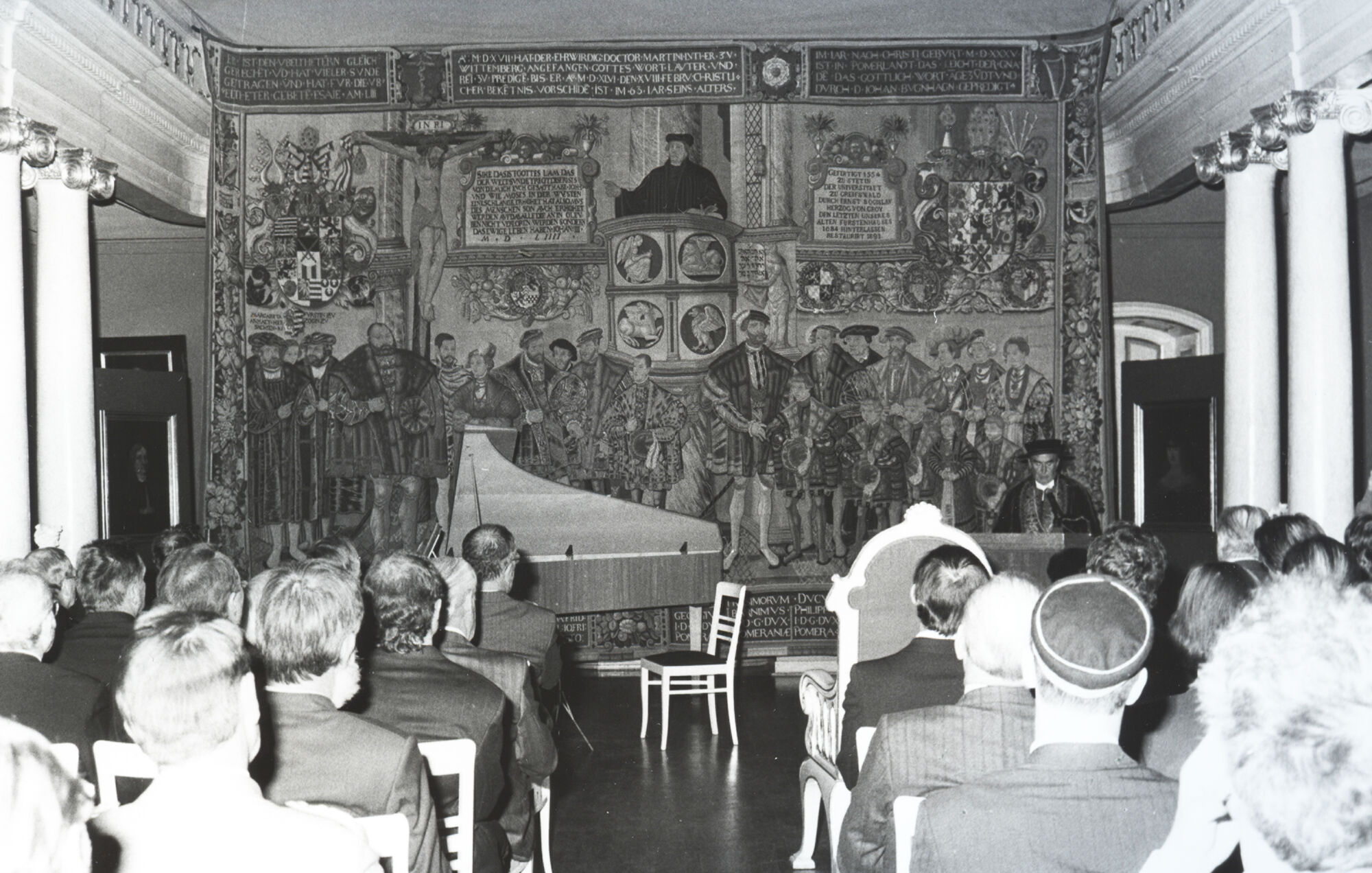With the discovery in the University Library, we now know what this epitaph, which was displayed every ten years at the Croy celebrations in Greifswald, actually looked like: it was not a wooden heraldic shield or ornamentally framed baroque text box. Instead, it is a simple black linen scroll, similar to a wall map used for teaching in a lecture hall, that contains the Latin text copied from the burial site in Słupsk that was inscribed in silver paint. In the last sentence, the canvas indicates that it is a copy by the Greifswald scholars.
This significant piece of university history was handed over to the university's art collection. After thorough, professional restoration, the epitaph will be made available to regional exhibitions, such as the Pomeranian State Museum in Greifswald, and can serve as an authentic element of future Croy celebrations.
Background Information
Three years before his death, Duke Ernst Bogislaw von Croy (1620-1684), the last descendant of the Pomeranian ducal family, promised land and prestigious valuables to the Pomeranian State University in Greifswald. However, with the immeasurably valuable inheritance at that time, the University was also obliged to organise a mourning and commemoration service every ten years for his mother Anna of Pomerania, Duchess of Pomerania by birth, who died in 1660. Such a celebration had already taken place at the University of Greifswald in 1665. The first commemoration in line with Ernst Bogislaw's will took place in 1710.
The lawyer and historian Karl Schildener reported on how the academic ceremony was celebrated over a hundred years later in 1820 in the Greifswald Academic Journal of 1822: ‘This hall, of considerable size, flat vaulted, lit from both sides, is decorated as follows. In the background, opposite the main door, on the wall where the podiums are located, the large woven tapestry is stretched out [...], so that the pulpit where Luther is preaching is located just above the speakers' platform. These podiums, otherwise gleaming with gold decorations, are now draped with black cloth and the epitaph of Duchess Anna - in silver letters on a black background - is attached to the front of the small podium.’
Today, the aforementioned ‘large woven tapestry’ is not only presented to the public every ten years. As the famous Croy-Teppich (Croy Tapestry) [de], it is a central exhibit in the Pomeranian State Museum. The baroque auditorium that Karl Schildener describes also still exists today - albeit now in a simple and functional form - as the Conference Room of the Main University Building. However, researchers in more recent years were always puzzled as to what the ‘Epitaph of Duchess Anna’ might have been. Epitaphs are short texts that honour the deceased, at least in a church context. The elaborate stone epitaph for Anna of Pomerania, the last Pomeranian duchess, can still be found today in the castle church (St. Jack’s) of Słupsk (Poland), the original burial site.
The Latin text on black stone is a eulogy to Duchess Anna and the extinct ruling dynasty - ‘Princess, Mistress, the most pious, cleverest, gentlest, noblest and most charitable ever’ [English translation of Ole Brauns’ translation from Latin]].
Further information
Historical description of a Croyfest [de]
About the Croy-Teppich (Croy Tapestry) [de] at the University of Greifswald
Information about Anna of Pomerania
Kustodie (University Collections) of the University of Greifswald
Contact at the University of Greifswald
Dr. Thilo Habel
Head of the Kustodie (University Collections)
Domstraße 11, Entrance 4, 17489 Greifswald
Tel.: +49 3834 420 3060
kustodieuni-greifswaldde



